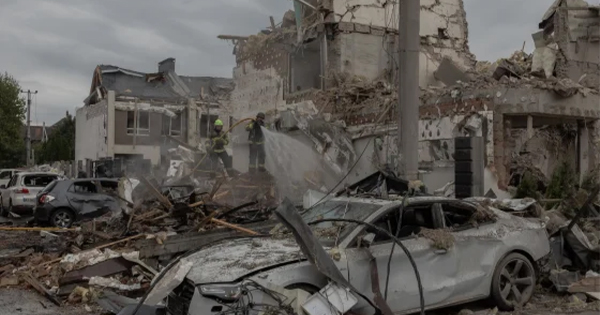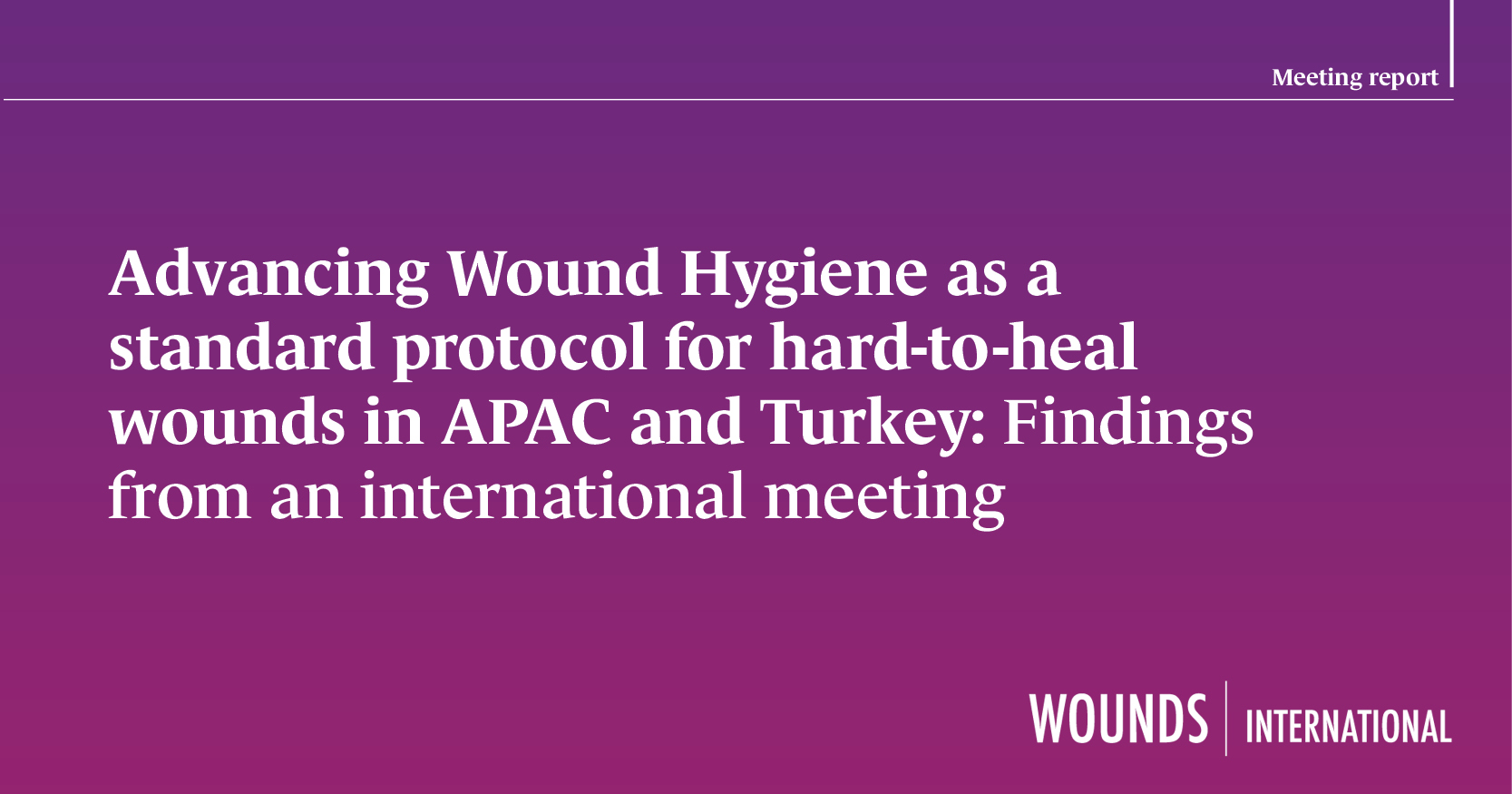The Russian invasion of Ukraine has created a surge in complex combat-related injuries, necessitating advanced multidisciplinary treatment approaches to trauma management (Kazmirchuk et al, 2022). The scarcity of resources and qualified medical personnel, the fast-changing nature of contemporary warfare, the emergence of new types of weaponry and war tactics and disrupted logistics have presented unique challenges for the medical system (Quinn et al, 2024).
An increased incidence of severe and complex trauma, predominantly blast injuries from explosive devices, shrapnel and gunshot wounds has been observed in the war in Ukraine since February 2022 (Kazmirchuk et al, 2022). These injuries often involve extensive tissue damage, wound contamination, and pose complex reconstructive challenges, necessitating innovative and adaptive approaches to achieve optimal outcomes. Additionally, such injuries are further complicated by the lack of skilled combat medics, difficult off-road transportation and Russian assaults on medical evacuation units, which frequently result in prolonged evacuation times (Quinn et al, 2024).
Superhumans Center — a specialised facility for plastic and reconstructive surgery, prosthetics and rehabilitation in Lviv, Ukraine, was created in response to the increased number of amputations in Ukraine following the 2022 escalation (Kolisnyk et al, 2025). Since 2023, Superhumans Center has played a pivotal role in managing severe limb and facial trauma cases arising from the unique circumstances of warfare in Ukraine. Since the opening of its surgical wing in February 2024, the centre has provided specialised surgical care to 575 patients and conducted 1,355 surgeries (data as of July 11, 2025). It is important to note that the centre is a specialised Level 4 facility for reconstructive and plastic surgery of the limbs and the face, prosthetics and rehabilitation, hearing restoration, ophthalmology and psychological rehabilitation. Therefore, the centre does not treat patients requiring complex neurosurgical, cardio-thoracic or abdominal interventions as it is a specialised Level 4 medical facility.
Understanding the nuances of wound management in wartime scenarios is crucial to improving clinical practices,patient survival rates, limb salvage and functional outcomes of casualties. This editorial aims to highlight the distinctive features and strategic challenges in the treatment of modern war-related wounds based on the practical experiences of clinicians at the Superhumans Center, and provide an overview of the work of the centre’s multidisciplinary medical team in a war setting.
Challenges in treatment of war trauma
Managing complex combat wounds during ongoing conflict presents numerous logistical, clinical and ethical challenges, notably:
- Prolonged battlefield evacuation time and lengthy medical evacuation process (Holcomb et al, 2023; Sherman et al, 2006
- Resource scarcity and lack of personnel sufficiently trained in microsurgery necessitating adaptive surgical solutions and resourceful improvisation (Bradley et al, 2017; Palyvoda et al, 2024; Quinn et al, 2024)
- Difficulties in logistics due to disrupted transportation routes and wartime risks and restrictions (Palyvoda et al, 2024)
- Significant psychological stress among healthcare personnel, impacting staff well-being and operational efficiency (International Rescue Committee, 2024).
Ethical dilemmas in treatment prioritisation and decision-making amid limited resources
Injuries most frequently encountered by the medical team at the Superhumans Center include those caused by landmines, drone explosive remnants, artillery shells and small arms fire. A prevalent complication in these wounds is infection by multi-drug resistant organisms (MDROs), which frequently complicates recovery and prolongs hospital stays. Between August 2024 and March 2025, the most common pathogens identified among the centre’s patients were Klebsiella pneumoniae (87 cases/310 patients), Pseudomonas (67 cases/310 patients), Staphylococcus aureus (134 cases/310 patients), Acinetobacter baumannii (39 cases/310 patients).
The persistence and high prevalence of these pathogens may be attributed to inadequate initial debridement due to overwhelmed surgical capacities at trauma hospitals near the frontline, insufficient attention to certain wounds because of comorbidity with severe injuries demanding immediate and highly specialised intervention in scenarios where qualified medics are limited and the spread of infectious agents within the medical facilities from which patients are transferred to Superhumans or during medical evacuation trains (Kazmirchuk et al, 2022).
Wartime wound treatment strategies
To prevent nosocomial infections, Superhumans Center has adopted a comprehensive wound treatment protocol (Bhandari et al, 2017; Sheean et al, 2015). Initially all incoming patients with wounds are isolated in separate rooms until the results of bacteriological culture analyses are obtained, reducing cross-contamination and minimising the risk of intra-hospital infections. Within the first 24 hours following admission to the centre, all patients with wounds that have not yet healed undergo a thorough revision of all wound sites, including previously surgically closed wounds, in the operating room under general anesthesia. This ensures adequate visualisation and precise debridement. Additionally, all previously placed catheters are replaced and submitted for bacteriological testing.
During surgical debridement, particular attention is given to thoroughly excising all nonviable tissue. Each wound undergoes extensive irrigation using large volumes of sterile saline solution, typically ranging from three to nine litres per wound, dependingon wound size, contamination level and presence of debris. Tissue samples are routinely collected and sent immediately for bacteriological cultures and antibiotic sensitivity testing, facilitating targeted antibiotic therapy when necessary.
For limb stump wounds, detailed attention is provided to managing nerve endings to prevent future neuroma formation. Osteotomies are carefully executed, smoothing bone edges at the end of the residual limb to prevent osteophytes formation and create an optimal environment for prosthetic fitting and rehabilitation. Immediate wound closure (within 24 hours of hospitalisation) is attempted whenever sufficient viable soft tissue ispresent, optimising primary intention healing and minimising infection risks (Sherman et al, 2006). If direct closure is not feasible due to extensive soft tissue defects, negative-pressure wound therapy (NPWT) systems are promptly applied. NPWT dressings are systematically changed under sterile conditions in the operating room every three days or sooner, ensuring continuous wound evaluation and optimal cleanliness. In such cases, wound closure is typically achieved within the first seven days of hospitalisation.
Postoperatively, patients remain isolated until bacteriological culture results are received, reducing the potential spread of antibiotic-resistant pathogens within the hospital. Antibiotics are withheld from asymptomatic patients exhibiting no signs of systemic inflammation, abnormal leukocyte counts, elevated C-reactive protein levels or fever, to reduce antibiotic resistance and adverse reactions. Antibiotic therapy is prescribed individually and commences strictly according to sensitivity results, promoting effective pathogen-specific treatment. Upon wound stabilisation and normalisation of patient condition, definitive wound closures are executed using local tissue, split-thickness skin grafts, local flap reconstruction or more complex microsurgical interventions with free flaps, adhering strictly to the reconstructive ladder principles and orthoplastic techniques.
When encountering extensive soft tissue deficits, surgeons utilise biodegradable temporising matrices or employ tissue expansion techniques to facilitate subsequent coverage. These methods are particularly valuable in preparing large or complicated wounds for definitive reconstruction. Bone defects, particularly from open fractures, are addressed using the Masquelet technique (Alford et al, 2021). Initially, infected and devitalised bone fragments are completely removed and the bone defect is temporarily filled with antibiotic-loaded cement spacers. Surrounding soft tissue or flap coverage is simultaneously ensured. After the formation of a biologically active membrane around the cement spacer (usually within six to eight weeks), a second surgical stage is conducted, replacing the spacer with an autologous bone graft.
In scenarios of substantial soft-tissue loss associated with significant bone defects, surgeons opt for free latissimus dorsi muscle flaps or osteomyocutaneous fibula free flaps. These approaches provide reliable coverage and structural support, facilitating long-term functionality and promoting limb salvage (Bakhach et al, 2017).
Treatment outcomes
Our experience and observations from the medical system in Ukraine suggest that the protocols developed as a result of wars over the past 100 years (Bradley et al, 2017) require ongoing adaptive refinement. Overall, our results indicate favourable outcomes through strategic adaptations, innovative clinical management and multidisciplinary collaboration. Among treated cases, complication rates, including infections and flap failures, have been minimised through rigorous protocols and multidisciplinary collaboration. Comparisons with international trauma centres underscore the efficacy and resilience of our approaches despite wartime limitations. Particularly, our experience suggests that the synergy of modern-day prosthetics and rehabilitation, combined with advancements in microsurgery and plastic surgery has allowed us to salvage more limbs and facilitate favourable functional outcomes in cases that would previously have been deemed unsuitable for reconstruction or prosthetics. On the other hand, the surge in amputations due to tourniquet syndrome (Stevens et al, 2024; Kolisnyk et al, 2025) and complications in wound healing highlight the need for the development of new treatment strategies.
Illustrative case studies highlight specific successes, such as limb salvage via microsurgical reconstruction and effective infection management, demonstrating the potential applicability of these innovations beyond wartime scenarios. The experience of Superhumans Center demonstrates the critical importance of informed, adaptable and innovative approaches to combat-related wound care. Despite significant challenges, favourable clinical outcomes are achievable through careful strategic planning, interdisciplinary collaboration and continual adaptive innovation in wound management. Lessons learned from this war may offer invaluable insights for trauma care globally, underscoring the resilience and adaptability necessary for effective medical response in wartime contexts (Kazmirchuk et al, 2022).





